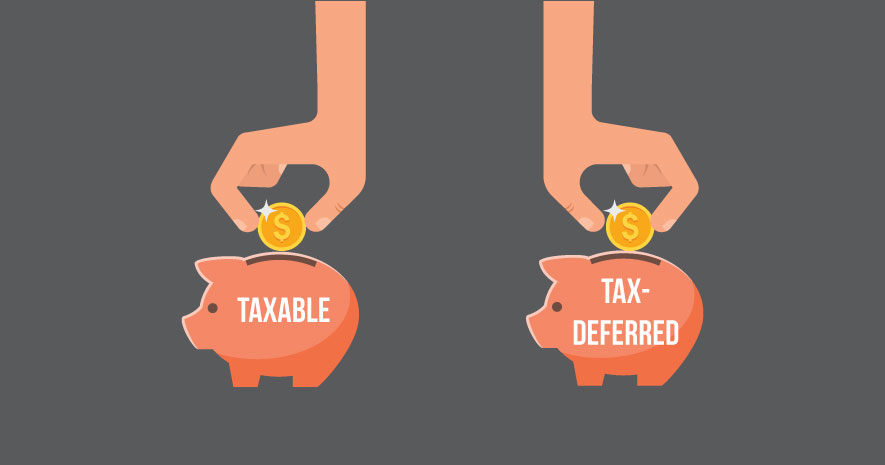Diversification is an important principle of risk management when it comes to saving for retirement. While many investors understand the benefits of spreading their risk exposure across asset classes in their portfolios, many don’t realize that diversifying their tax exposure can have benefits in terms of managing cash flow in retirement.
Despite the potential benefits of diversifying tax exposure, few participants do so, even though these options are offered by many plans. Today, 70 percent of employers offer a Roth 401(k) option, according to the Plan Sponsor Council of America’s (PSCA) 61st Annual Survey Reflecting 2017 Plan Experience, but only 20 percent of employees take advantage of the strategy.
Employers who are concerned about employees’ financial well-being should take the opportunity to educate employees about the potential benefits of saving retirement dollars in plans that are taxed differently. Employers who offer traditional and Roth 401(k) options should make user-friendly information available so participants can make decisions appropriate for their risk tolerance, timeframe, and retirement goals.
Pay Taxes Now or Later?
First, it’s important to know the basics between a traditional vs. Roth 401(k) employer-sponsored retirement plan, as well as their retail cousins, the traditional and Roth Individual Retirement Account (IRA). In a traditional 401(k) plan, participants make tax-free contributions from their paychecks. The money grows tax-deferred, but the full amount gets taxed at the participant’s income tax rate when it is withdrawn. There are penalties when money is taken out before reaching age 59 ½. Contributions to a traditional IRA may be fully or partially deductible, and the tax consequences of withdrawals are the same as with a traditional 401(k).
With a Roth 401(k), the taxation is basically reversed, and contributions are taxed at the participant’s income tax rate at the time of the contribution. But, once the participant has reached age 59 ½, withdrawals from a Roth account are tax-free, including the growth of the funds. Roth IRAs have income eligibility limits, but work similarly to the Roth 401(k) in terms of the timing of when taxes are paid. Also, it’s important to note that participants need to hold onto their Roth account for a minimum of five years before withdrawing funds to receive the full benefits.
Roth users are typically betting that they will be at a higher tax rate when they withdraw funds in retirement than when they are contributing during their working years. This theory is particularly appealing for younger workers who have yet to reach their peak income years and will have many years of growth before they begin withdrawing funds.
Showing the Impact of Taxation
There is much debate among investors about which vehicle provides higher income at retirement after tax considerations – traditional pre-tax or Roth retirement accounts. What many people don’t realize is that the decision does not have to be made exclusively for one account or the other.
While participants can contribute a maximum of $19,000 into all types of 401(k) accounts in 2019, there is no playbook outlining how those deferrals may be split between traditional and Roth accounts.
Participants may think paying taxes up front on Roth contributions might be too steep, but they may reconsider this upfront cost when learning what may happen in retirement if they are solely invested in a traditional account.
For example, a retiree may need to pay for a major expense in retirement, like a new car, a new home (that is not a first home purchase) or a significant medical expense. Taking a large withdrawal from a traditional 401(k) plan to pay for these expenses may bump the retiree into a higher tax bracket. Withdrawing funds from a Roth account, however, won’t have that effect.
The Tax Cuts and Jobs Act of 2017 (TCJA) made significant changes to the tax code, including lowering many people’s rates—and with them the rates that participants pay on Roth contributions. The fact that these tax cuts are scheduled to “sunset” and return to pre-2018 levels in 2026 highlights the unpredictable nature of taxes. Employers can explain that contributing to a Roth is one way to mitigate the unpredictability of tax rates. For funds that have been contributed to a Roth, participants don’t need to worry about what Congress may do about tax rates in the future.
Other Roth Opportunities and Restrictions
Some employers allow traditional plan participants to convert all or a portion of their assets into a Roth 401(k), but assets in a Roth cannot be converted to a traditional 401(k). Rules allow high-income earners to convert their traditional IRA to a Roth IRA, so long as they are able to pay the appropriate taxes at the time of the conversion. Previously, only people earning less than $100,000 could do this. A new drawback to a Roth conversion is that it cannot be reversed. The TCJA removed the ability to undo the conversion to Roth by a later characterization back to a traditional IRA. So if the asset value declines before the income taxes are paid, you will still owe the taxes on the value at the conversion date.
In addition, traditional 401(k)s and IRAs require participants to take a Required Minimum Distribution (RMD) each year, starting at age 70 ½. While RMD rules don’t apply to Roth IRAs, these rules do apply to a Roth 401(k). This distribution requirement can be avoided by rolling the Roth 401(k) assets into a Roth IRA upon retiring or leaving the company.
Roth IRA accounts can be passed along to spouses tax-free when the retiree dies, and non-spouse heirs may be able to spread RMD’s over their own life expectancies, effectively extending the tax deferral period even longer.
Roth accounts are more flexible than traditional accounts. For example, after the Roth account has been open for five years, a retiree can take out the principal any time they want tax-free. And the IRS allows exceptions to the 10% early withdrawal penalty before age 59-1/2 for the first-time purchase of a home or for college expenses. Aside from the many advantages of Roth accounts, an individual should contribute enough to their employer’s plan to get the match, before they contribute to a Roth IRA. Getting the full employer match is almost always more valuable than tax differences between traditional and Roth accounts.
Lastly, it’s important for participants to realize that company matching 401(k) contributions must go into a traditional account even if the participant uses a Roth 401(k) for his or her own contributions.
Time to Boost Roth Education
Understanding the tax rules about the various types of retirement accounts can be tricky, even for the savviest of investors. The lack of understanding surrounding Roth accounts may explain why they aren’t very popular with plan participants. Even when they are used, PSCA found that contribution rates are lower in Roth than in traditional accounts.
Plan sponsors can play an important role in outlining the differences so participants can think strategically about taxes and retirement. In addition, plan sponsors have a unique opportunity to help participants understand that diversifying their retirement dollars across traditional and Roth accounts can be an effective way to mitigate some of the risk related to taxes in retirement.





